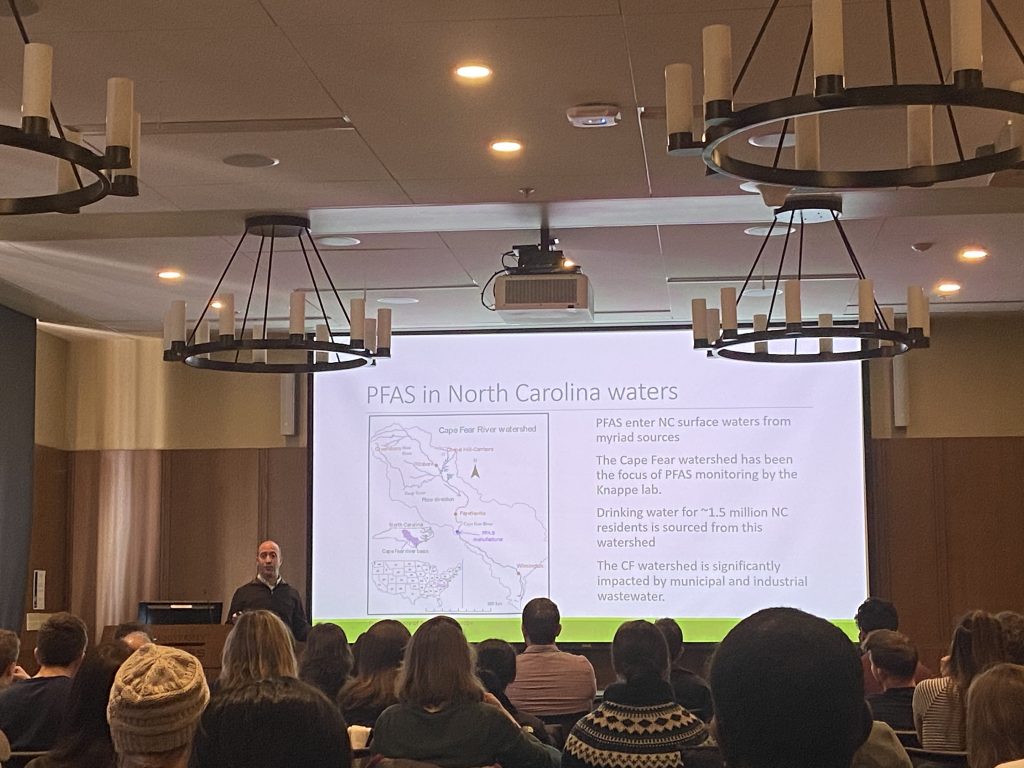About 70% of the human body is made up of water. Water is something we consume on a daily basis. Therefore, when a community’s water source is threatened or contaminated it can be extremely detrimental.
In 2017, it became apparent that there was water contamination in eastern North Carolina. Specifically, PFAS or per- and polyfluoroalkyl Alkyl chemicals were found in the water supply. As a result, several legislative mandates were issued in 2018 establishing a PFAS Testing Network to investigate the contamination.
Lee Ferguson, an Associate Professor of Civil and Environmental Engineering at Duke and Kathleen Gray, a professor at UNC’s Institute for the Environment, are testing PFAS water contamination and communicating any risks to the public.
Gray is part of the network’s risk communication team. She explained that PFASs are hard to address because the health effects are unknown and they have yet to determine a standard or guideline for these substances. However, because this water contamination affects the lives of everyone connected to the water supply it is extremely important to communicate risk to the affected community but without eliciting panic.
Gray explained that people often ask, “Are my family and I safe?” “What can I do to protect myself and my family?” “Why did this happen?” and “Why wasn’t it prevented?”
In the last year Ferguson and his research team have tested 409 sites in North Carolina for PFAS compounds.

He explained that PFAS substances are particularly dangerous because they are non-degradable, potentially toxic and constantly changing. Long-chain PFASs are being replaced by fluorinated alternatives.
Ferguson described this phenomenon as “playing environmental ‘whack-a-mole’ with different substances.”
Ferguson and his testing team have found two contaminated water supply sites in North Carolina. Dangerous contamination is based on the EPA health advisory level of 70ng/Liter. The exceedances were found in Maysville and Orange Water and Sewer Authority. Maysville was able to switch to the Jones County water source once the problem was identified.
New data that came in within the last couple weeks found high month-to-month variability in PFAS in the Haw River near Pittsboro. Ferguson and his team predict that it is coming downstream from a waste treatment plant.

While all of this information may seem very alarming, Gray and Ferguson both reiterated that it is not necessary to panic. Instead, people should make sure they are drinking filtered water or invest in a water filter.
Ferguson added, “The best choice is reverse osmosis.”
Gray and Ferguson presented their work at a SciComm Lunch-and-Learn, a monthly event sponsored by Duke Science & Society Initiative that explores interesting and innovative aspects of science communication. The event is free and open to anyone in the Duke community.

